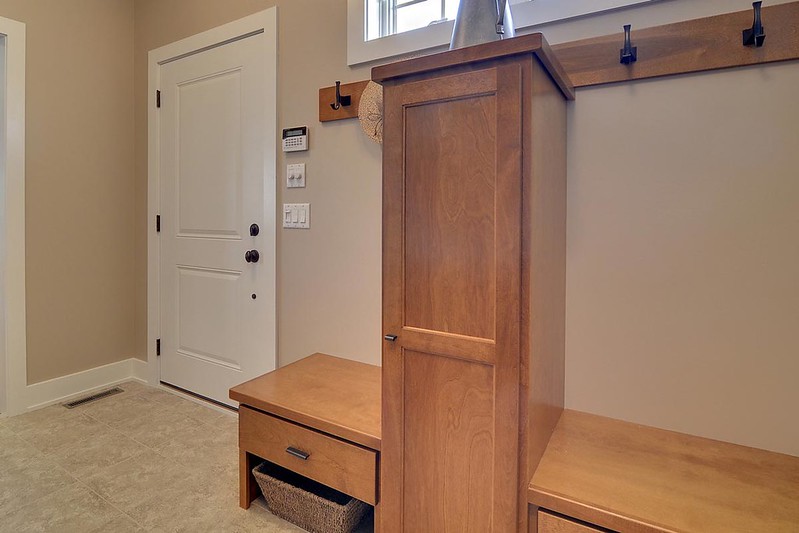Mud room
Contents |
[edit] Introduction
A mud room (or mudroom) is typically a secondary entrance to a suburban American home. It is most commonly used as a transitional space between indoor and outdoor environments and is not meant to serve as the primary entrance to the residence.
It is called a mud room because it is intended to be used for times when entry into the home could cause a mess. These vestibules are meant to give people somewhere to remove and store muddy footwear, wet clothing or other items that are used outdoors. They are also practical places to clean pets when they come inside.
[edit] Background
Originally, the mud room was just an informally designated area of a home. It came into acceptance as a dedicated space in the 1980s, when it became a more standard part of suburban homes.
Mud rooms are sometimes referred to as utility rooms in the US, particularly when they are used to house washing machines, driers, water heaters or other equipment for the maintenance of the home. They can sometimes increase the value of a home if they provide a significant amount of additional storage space and are well designed.
[edit] Mud room characteristics
Some mud rooms are located in the basement, although most are usually placed off the kitchen or attached garage and can be accessed easily. They are usually situated at the back or side of the house.
In the UK, mud rooms (or boot rooms) are becoming more popular and may be set up, for example, inside a conservatory.
Mud rooms can include:
- Bench or seating.
- Storage units (including something suitable for coats, sporting equipment and other items).
- Utility lighting.
- High traffic flooring.
- Hooks and small storage baskets.
- A sink (especially when used for laundry).
[edit] Related articles on Designing Buildings Wiki
Featured articles and news
RTPI leader to become new CIOB Chief Executive Officer
Dr Victoria Hills MRTPI, FICE to take over after Caroline Gumble’s departure.
Social and affordable housing, a long term plan for delivery
The “Delivering a Decade of Renewal for Social and Affordable Housing” strategy sets out future path.
A change to adoptive architecture
Effects of global weather warming on architectural detailing, material choice and human interaction.
The proposed publicly owned and backed subsidiary of Homes England, to facilitate new homes.
How big is the problem and what can we do to mitigate the effects?
Overheating guidance and tools for building designers
A number of cool guides to help with the heat.
The UK's Modern Industrial Strategy: A 10 year plan
Previous consultation criticism, current key elements and general support with some persisting reservations.
Building Safety Regulator reforms
New roles, new staff and a new fast track service pave the way for a single construction regulator.
Architectural Technologist CPDs and Communications
CIAT CPD… and how you can do it!
Cooling centres and cool spaces
Managing extreme heat in cities by directing the public to places for heat stress relief and water sources.
Winter gardens: A brief history and warm variations
Extending the season with glass in different forms and terms.
Restoring Great Yarmouth's Winter Gardens
Transforming one of the least sustainable constructions imaginable.
Construction Skills Mission Board launch sector drive
Newly formed government and industry collaboration set strategy for recruiting an additional 100,000 construction workers a year.
New Architects Code comes into effect in September 2025
ARB Architects Code of Conduct and Practice available with ongoing consultation regarding guidance.
Welsh Skills Body (Medr) launches ambitious plan
The new skills body brings together funding and regulation of tertiary education and research for the devolved nation.
Paul Gandy FCIOB announced as next CIOB President
Former Tilbury Douglas CEO takes helm.
UK Infrastructure: A 10 Year Strategy. In brief with reactions
With the National Infrastructure and Service Transformation Authority (NISTA).























